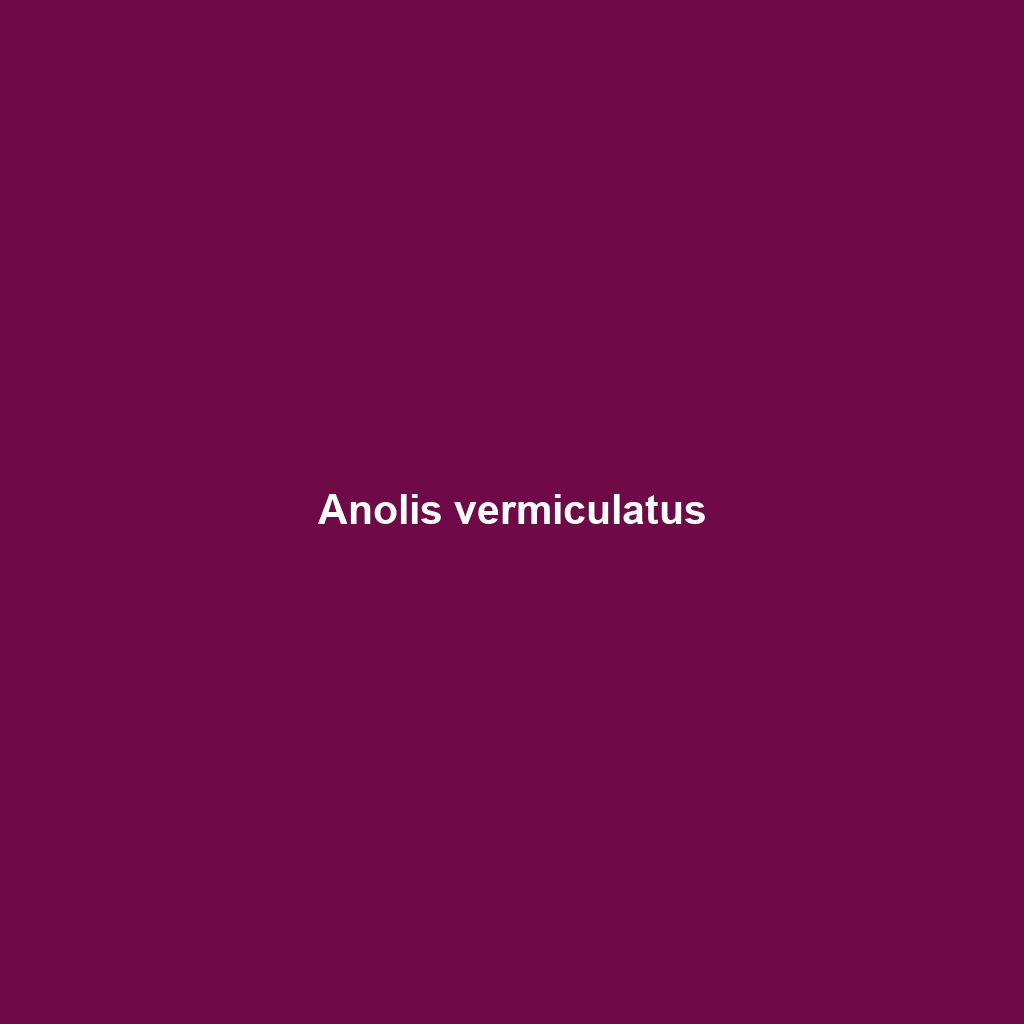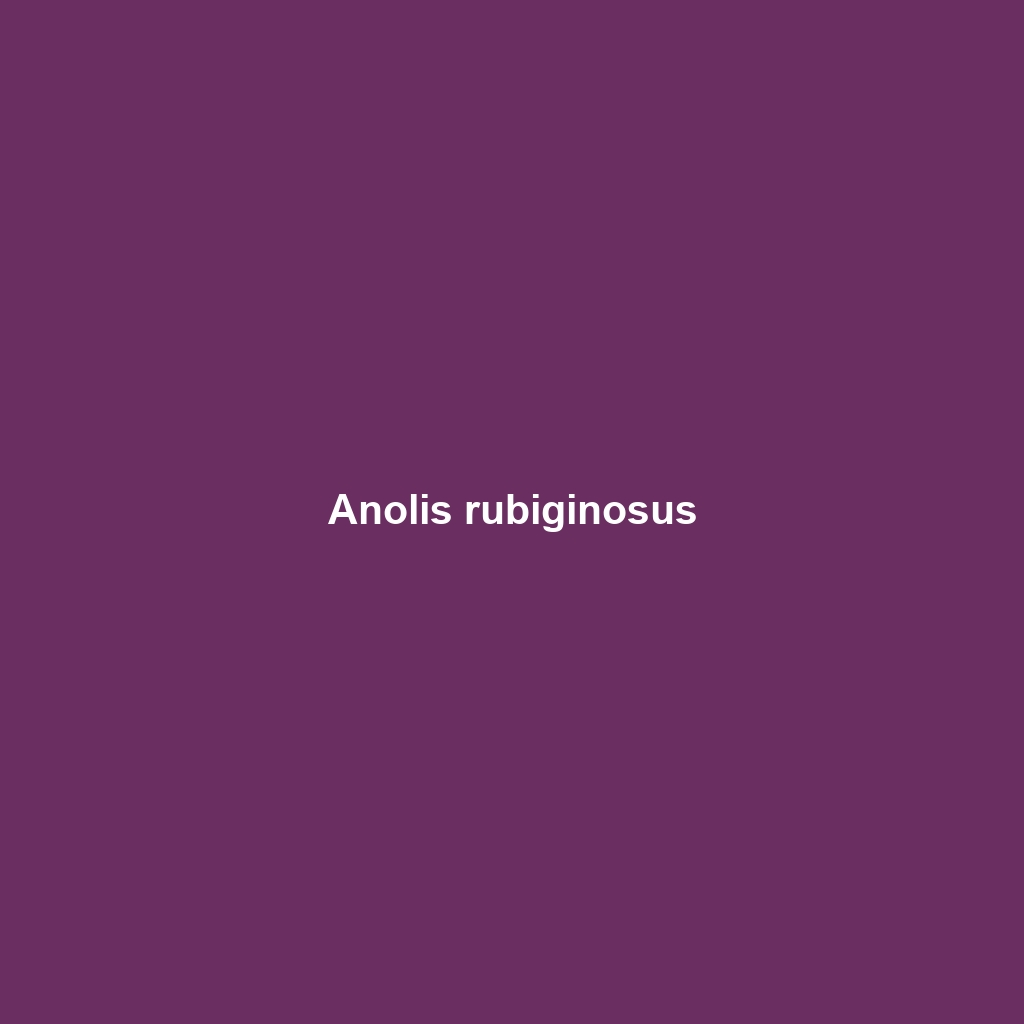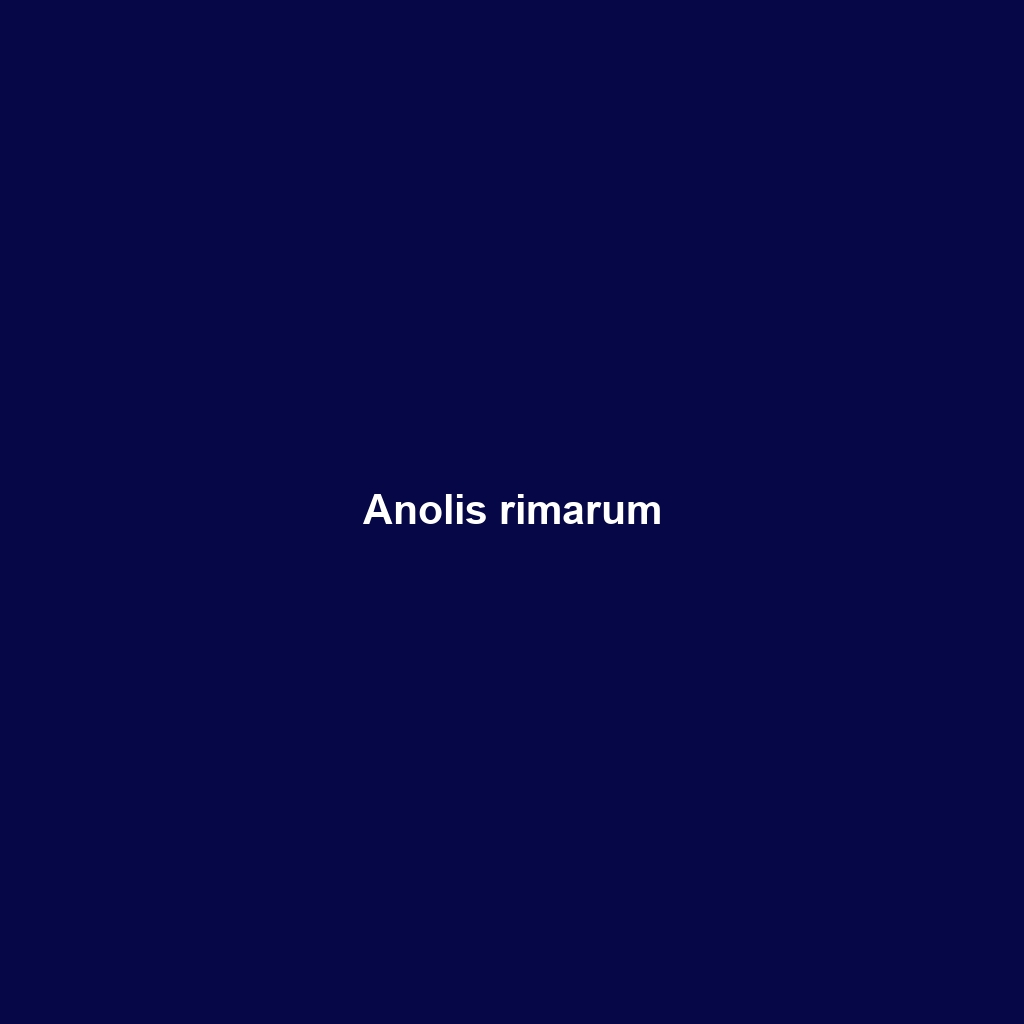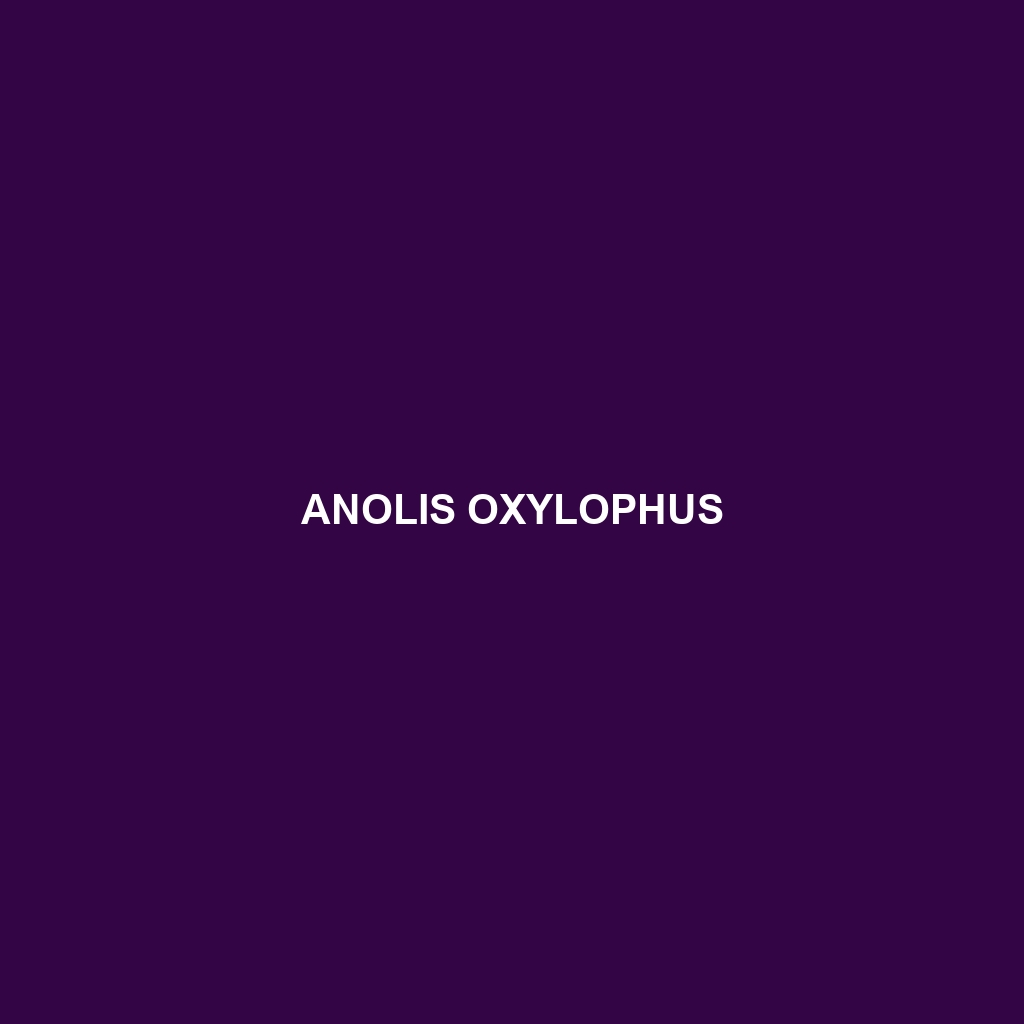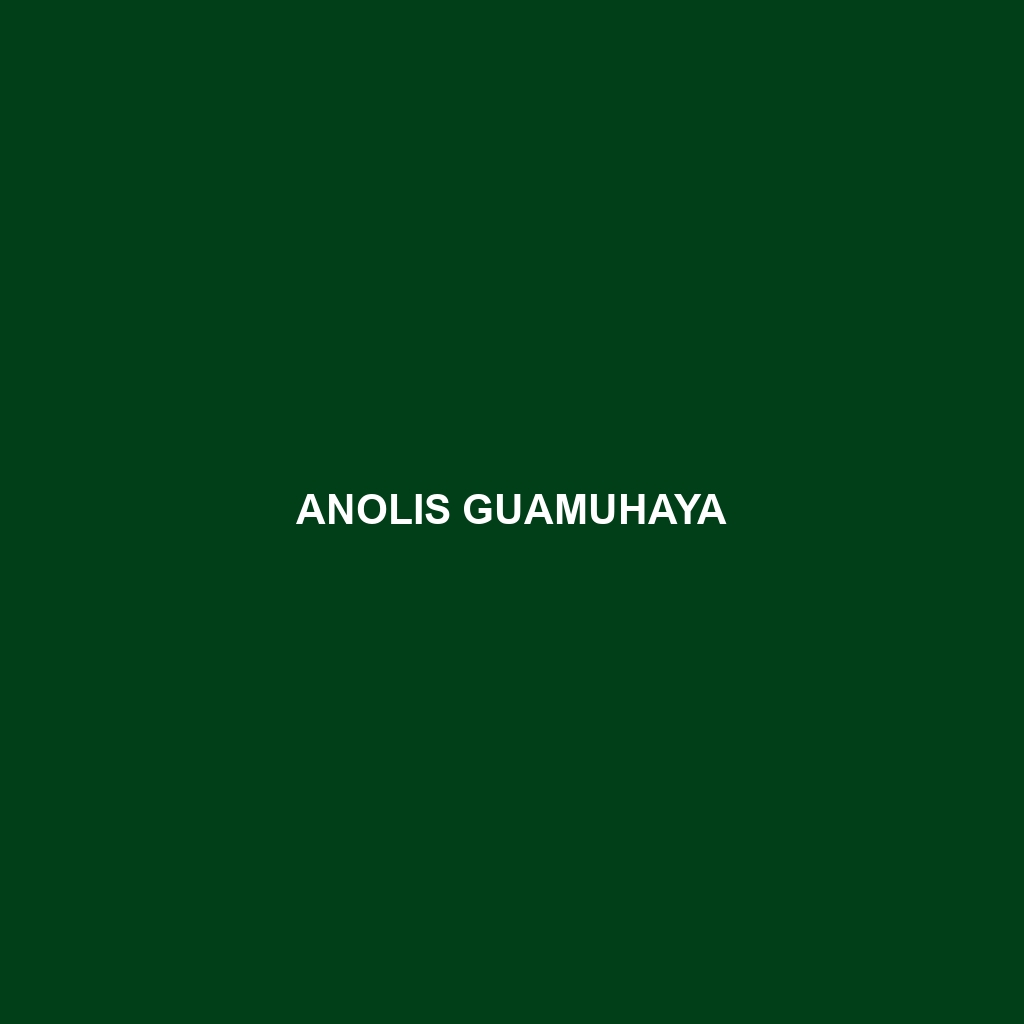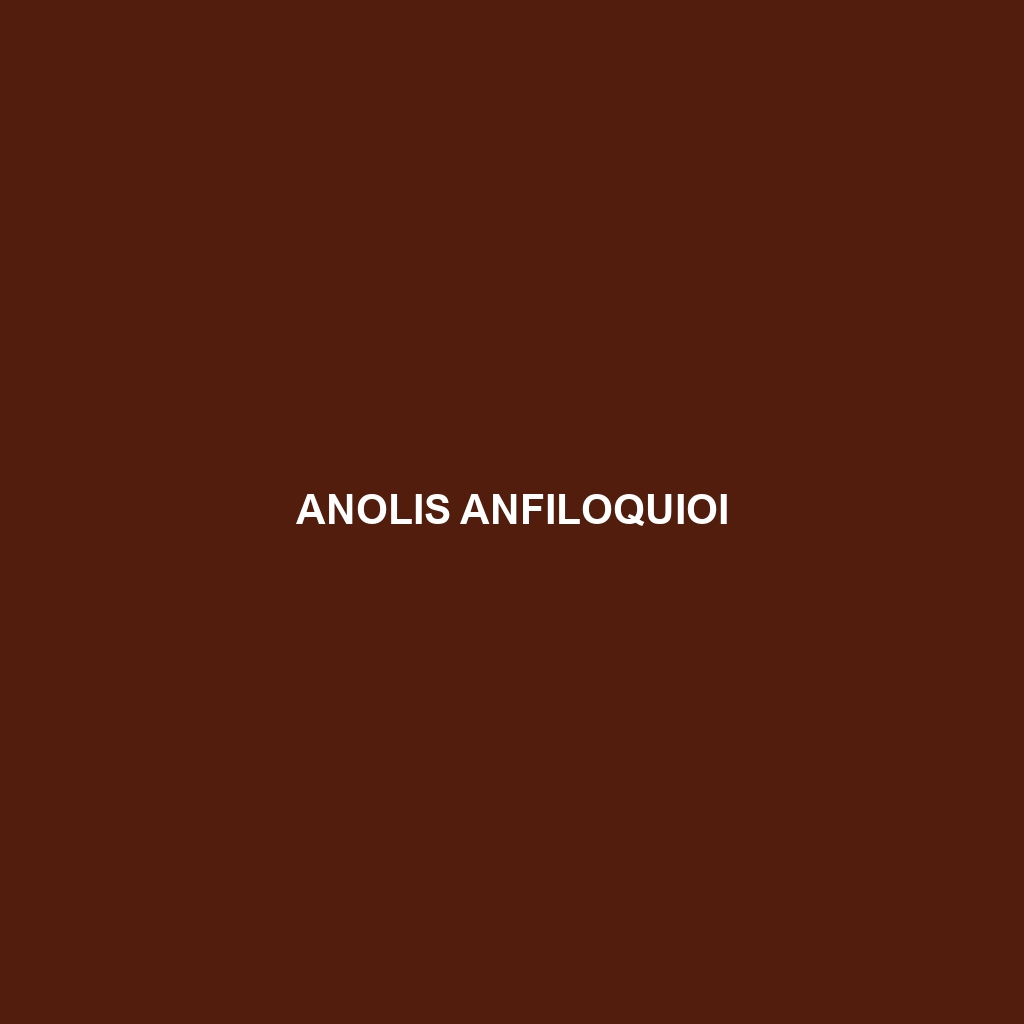Discover the captivating Anolis vescus, also known as the East Cuban Anole, thriving in subtropical habitats with vibrant colors, notable behaviors, and a diverse diet primarily consisting of insects. This unique species plays a crucial role in its ecosystem, contributing to insect population control while serving as prey for larger animals.
Tag: Cuban reptiles
Anolis rubiginosus
Discover the vibrant Anolis rubiginosus, a reddish-brown lizard native to the tropical forests of the Caribbean, known for its agile movements and territorial displays. An exceptional insect regulator in its ecosystem, this species thrives in humid environments and showcases fascinating behaviors, including impressive color adaptations and tail regeneration.
Anolis rimarum
Discover the vibrant Anolis rimarum, a diurnal lizard native to the subtropical forests of Cuba and Hispaniola, known for its striking coloration, agile climbing abilities, and vital role in controlling insect populations. This species is currently vulnerable due to habitat loss, making conservation efforts essential for its survival.
Anolis oxylophus
Discover the Cuban green anole (Anolis oxylophus), a vibrant lizard native to Cuba's lush forests and coastal mangroves, known for its impressive ability to change color and its territorial displays. This arboreal species, measuring 5 to 7 inches long, plays a crucial role in its ecosystem by controlling insect populations and serving as prey for larger predators.
Anolis guamuhaya
Discover the unique Anolis guamuhaya, or Cuban Anole, a vibrant green to light brown lizard native to the lush forests of eastern Cuba. Known for its impressive climbing abilities and distinctive dewlap displays, this diurnal, insectivorous species plays a vital role in controlling insect populations and is currently classified as "Vulnerable" due to habitat loss.
Anolis anfiloquioi
Discover the vibrant Anolis anfiloquioi, a fascinating lizard species native to the tropical forests of the Caribbean. Measuring 5 to 6 inches, this arboreal reptile showcases striking green and brown coloration, plays a crucial role in pest control, and is currently listed as vulnerable due to habitat threats.
